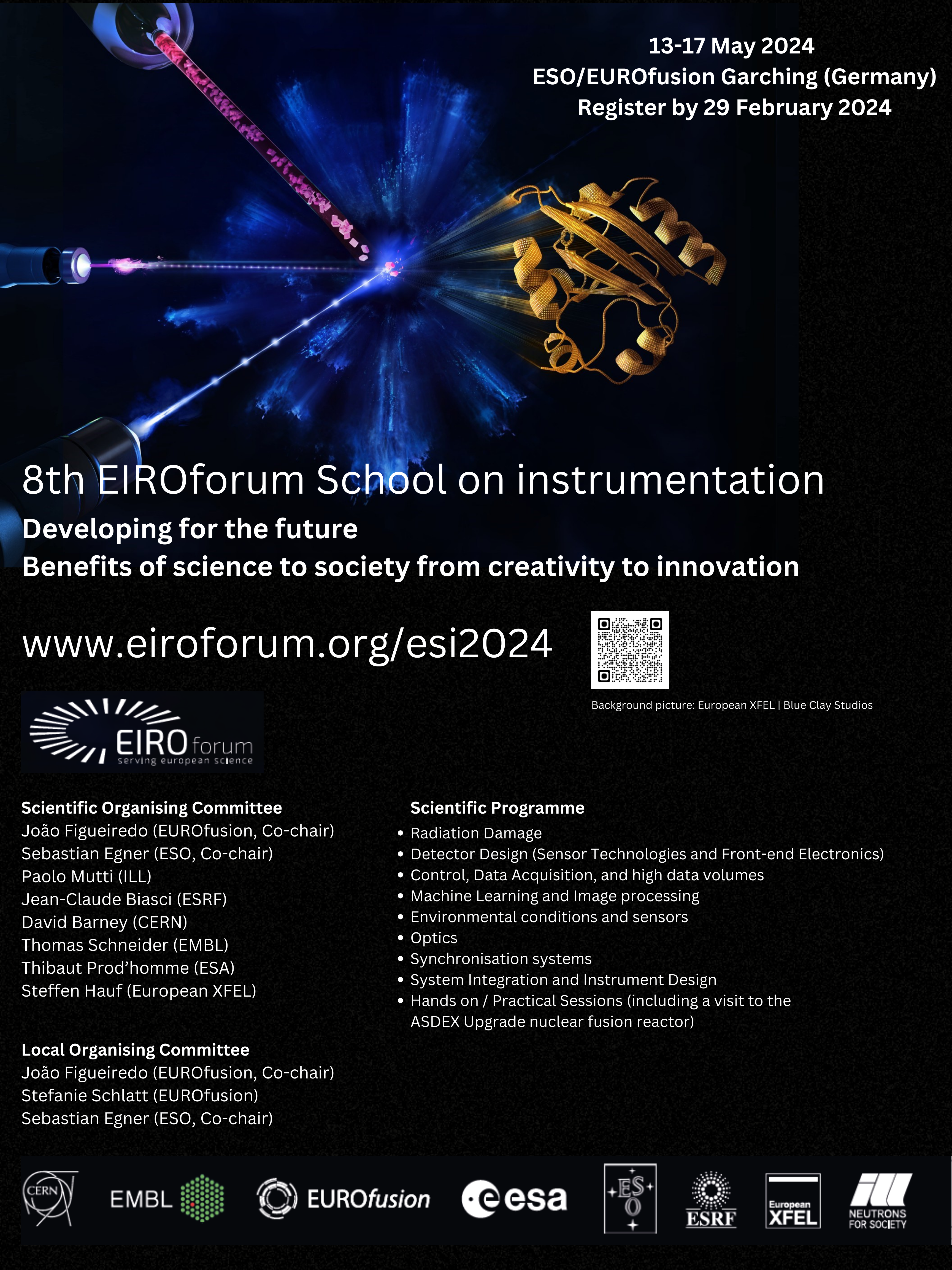8th EIROforum School on Instrumentation
ESO, Garching (Germany)
The next EIROforum School on Instrumentation (ESI) will take place at ESO and EUROfusion in Garching, Germany from 13 to 17 May 2024.
The scientific programme of ESI addresses all aspects of scientific instrumentation related to the missions of the EIROforum organisations.
This free event is open to all, registration closes on 29 February.
ESI is a biennial event, jointly organised by the Instrumentation Working Group of the EIROforum organisations (EMBL, ESA, ESO, ESRF, EUROfusion, CERN, ILL, European XFEL), which aims to teach the basic principles of instrumentation to young engineers and researchers (PhD students, postdocs).
This edition's highlights consist in a visit to the ASDEX Upgrade nuclear fusion reactor and keynote lectures on ‘Developing for the future - Benefits of science to society from creativity to innovation’.
The school consists of short lectures from top EIRO scientists covering both theory and practical examples and hands-on sessions for a variety of instrumentation-related topics:
• Detector Design (Sensor Technologies and Front-end Electronics)
• Radiation Damage
• Control, Data Acquisition, and high data volumes
• Machine Learning and Image processing
• Environmental conditions and sensors
• Optics
• Synchronisation systems
• System Integration and Instrument Design

